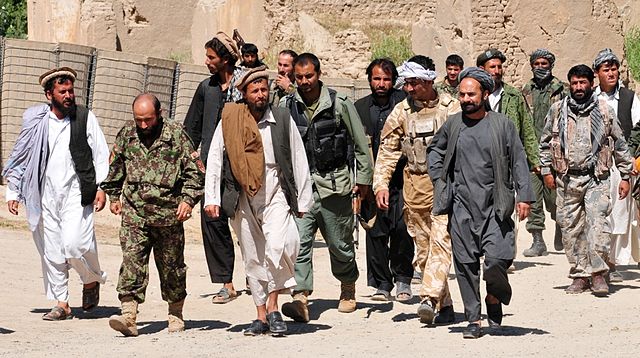Afghanistan civilian casualties fall
April 25, 2019 | Expert Insights

Civilian casualties from the Afghan conflict dropped by almost a quarter in the first three months of the year, amid freezing winter weather and a sharp fall in the number of suicide attacks. Is the ongoing negotiation directly impacting a change in Afghanistan's complex domestic security issues?
Background
The War in Afghanistan followed the United States invasion of Afghanistan of 7 October 2001. The U.S. was initially supported by the United Kingdom, Canada, and Australia and later by a coalition of over 40 countries, including all NATO members. The war's public aims were to dismantle al-Qaeda and to deny it a safe base of operations in Afghanistan by removing the Taliban from power. Since the initial objectives were completed at the end of 2001, the war mostly involves the U.S. and allied Afghan government troops battling Taliban insurgents. The War in Afghanistan is the longest war in U.S. history.
Tens of thousands of people have been killed in the war. Over 4,000 ISAF soldiers and civilian contractors, over 62,000 Afghan national security forces were killed, as well as over 31,000 civilians. Unfortunately, there is no accurate figure accounted for the number of Taliban fighters killed so far.

Analysis
With overall casualties caused by militant groups down by more than a third over the period, for the first time since the UN began compiling records more than a decade ago, pro-government forces caused more deaths.
Overall civilian casualties fell to 1,773 in the January to March period, a 23 percent drop from the same period a year earlier, the latest report from the UN Assistance Mission in Afghanistan (UNAMA) said. That was made up of 581 killed and 1,192 wounded. At the same time, the report pointed to a large number of casualties caused by U.S. and Afghan government airstrikes, which killed 145 people and made up the largest single cause of civilian deaths during the period. It said 140 of those came from U.S. air strikes.
“A shocking number of civilians continue to be killed and maimed each day,” Tadamichi Yamamoto, the top UN official in Afghanistan, said in a statement calling on all sides to do more to protect civilians. He said militant groups should stop deliberately targeting civilians and using improvised explosive devices (IEDs) such as roadside bombs, while pro-government forces should cut the rising death toll from air strikes and search operations.
While results from a single three-month period may be insufficient to demonstrate a broader trend, the figures reflect a slowdown in violence over an unusually cold winter with an especially significant drop in the multiple suicide attacks that have been a hallmark of the conflict.
UNAMA documented four suicide attacks that killed or wounded 178 civilians during the first three months of the year, against 19 incidents that resulted in 751 civilian casualties during the same period in 2018, the report said. However, the report said it was unclear whether the drop in casualties was influenced by the talks or by any measures by parties to the conflict to protect civilians better.
It also noted that the comparison was affected by the fact that last year saw one of the deadliest attacks of the entire war, when almost 350 people were killed or wounded in a suicide blast in Kabul in January 2018.
While casualties caused by insurgent groups including the Taliban and Islamic State fell by 36 percent to 963, including 227 killed and 736 wounded, they still accounted for the largest number of civilian casualties overall in the quarter. By contrast, casualties caused by pro-government forces rose by 39 percent to 608, made up of 305 killed and 303 wounded.

Counterpoint
The results from a single three-month period may be insufficient to demonstrate a broader trend in the fall of casualties. It appears that this maybe constituting the standard statistical error of confusing correlation with causation, as winter months usually see a drop in suicide bombing and civilian casualties, calculated over a ten year period.
Assessment
Our assessment is that the decline in suicide attacks is coinciding with a series of meetings between U.S. diplomats and Taliban representatives aimed at establishing a basis for full peace negotiations to end more than 17 years of war in Afghanistan. We believe that the report has stated that it is unclear whether the drop in casualties was influenced by the talks or by any measures by parties to the conflict to protect civilians better. Therefore, we feel that it is too early for anyone to speculate on the success or failure of the US-Afghan-Taliban talks by measuring the drop in suicide attacks.
Image Courtesy: isafmedia, Taliban insurgents turn themselves in to Afghan National Security Forces at a forward operating base in Puza-i-Eshan -a, CC BY 2.0
Graph Courtesy: @UNAMA
Read More:








Comments